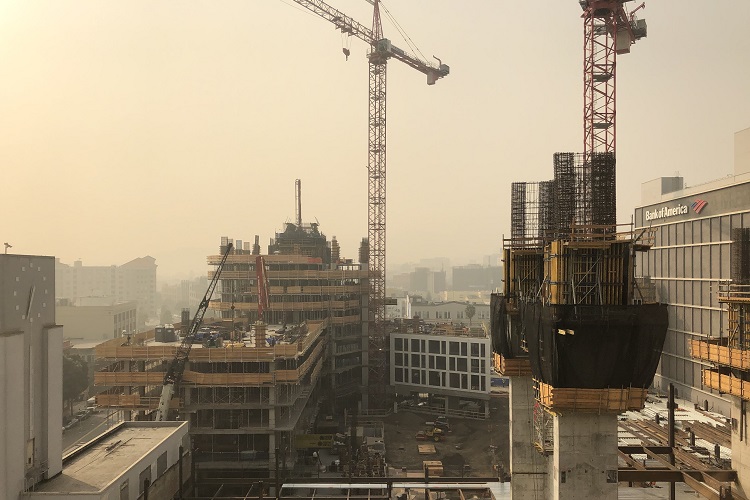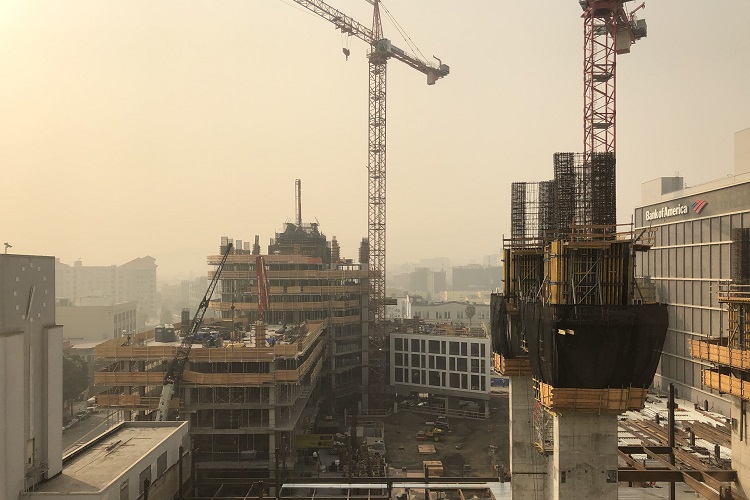

(1) Photo by Daniel Ge.
By Jim Tidwell
Over the past few years, we have seen media reports of dozens of spectacular fires in buildings under construction. These fires highlighted several risks, some of which weren’t widely recognized. On closer examination, we discovered that there are about 3,750 fires in buildings in varying phases of construction annually, 2,650 fires in buildings undergoing renovation, and another 2,130 fires in buildings being demolished.1 Naturally, the fire service, being a reactive group, began exploring methods to reduce the frequency as well as the severity of these fires when they do occur. We can break down the responses into the following areas:
- Revising building and fire codes to better address ignition causes.
- Building stronger relationships with the construction industry to better understand what roles the respective organizations can play to address the fire problem, i.e., developers, contractors, owners, elected leaders, and so on.
- Provide more information to interested parties (emergency response personnel, inspection personnel, contractors, developers) because better informed stakeholders will voluntarily implement reasonable fire safety practices.
The National Association of State Fire Marshals (NASFM) worked closely with several groups to formulate proposed revisions to the model codes. The Fire and Life Safety Section of the International Association of Fire Chiefs (IAFC), along with the American Wood Council, were key contributors to revisions that will be included in the 2021 edition of the International Fire Code. These successful proposals were developed and submitted through the International Code Council’s (ICC’s) Fire Code Action Committee, which is made up of appointees from the IAFC, NASFM and ICC. Some of the changes that will be published include the following:
- Enhanced requirements for a fire safety plan for every construction project. For small projects, this may be a simple one-page form with the owners’ and contractors’ information, how to notify the fire department, where to muster off the job site if evacuation is required, and so on. For larger sites, this may be a more complex plan that includes specific security to be provided, hot work programs, evacuation signals, and other necessary components.
- The option for the jurisdiction to require a “fire watch” as deemed appropriate. This may be required while the job site is active (during working hours), inactive, or both. Detailed requirements for the person conducting the fire watch are now included in the code.
- A new requirement for a site safety director on every construction site with clear direction as to the responsibilities outlined to maintain a fire safe construction site.
- Training for the site safety director and fire watch personnel is required to ensure a level of competence consistent with the responsibilities. The training must be approved by the jurisdiction, but no curriculum is specified.
None of these requirements were opposed by the industry; in fact, many industry representatives supported and applauded their success. Most industry officials as well as fire service members recognize that, while clarification and enhancement of the regulations are important, it is recognized that the existing requirements haven’t been enforced or followed on many construction sites. Had existing code requirements been followed, many of the devasting fires in these buildings would have been avoided.
Based on the recognition that a greater awareness of “best practices” relating to fire safety on construction sites will likely be the best way to reduce these fires, the NASFM Fire Research and Education Foundation applied for and received a grant from the Federal Emergency Management Agency Assistance to Firefighter Grants Program as part of the Fire Prevention and Safety Grants. The project included the development and delivery of training with a focus on the following four audiences:
- Fire response personnel.
- General contractors/developers.
- Contractors/subcontractors.
- Inspection personnel (building and fire inspectors).
The purpose of the training is to provide the knowledge necessary for each group to participate in collaborative processes to protect their communities from fires in buildings under construction. In the process, the training resulted in a product that will also meet the code requirements (as per the NFPA and ICC) for trained construction site safety directors and others.
One of the factors in the development of this training that was of paramount importance (if the result was to be widely accepted and inclusive of all the necessary perspectives) is that a wide range of contributors participated in the project. [See box for steering committee members]. Of particular importance was information provided by Lend Lease Construction in the form of their “Construction Fire Safety Manger Handbook.” This document, as well as input from the myriad participants, ensures that a program that will, if used, will result in safer construction sites. The training is being offered at no cost in a classroom and an online version.
This brings us to the most important piece of the solution to reduce or eliminate these fires: the new code requirements must be followed; if they aren’t implemented voluntarily, jurisdictions must provide the enforcement mechanisms necessary to achieve compliance. The training being offered by the NASFM Foundation is a no-cost path to compliance with the training requirements in the codes, so there should be no reason for jurisdictions to avoid the application of those important training requirements. If the construction industry, jurisdictions, and community members work together to ensure the “best practices” outlined in the training offered by the NASFM Foundation, fires at construction sites will be far fewer in the future, and the consequences of such fires that do occur will be far less severe.
The training is available online at http://www.constructionfiresafety.training. For more information, contact NASFM at admin@firemarshals.org.
The fire service and industry collaborated on the regulatory changes needed. The NASFM Foundation has created and now offers the essential training. There are no more excuses, so let’s solve the problem!
National Association of State Fire Marshals Fire Research and Education Steering Committee Members
Kenneth E. Bush, Chief Fire Protection Engineer, Maryland Office of the State Fire Marshal
Jeff Hussey, State Fire Marshal, State of Ohio
Peter Ostroskey, State Fire Marshal, Commonwealth of Massachusetts
Kevin Reinertson, Deputy Fire Marshal/Office of the Fire Marshal, CAL Fire/Riverside County FD
Glenn Corbett, P.E, Associate Professor of Fire Science, John Jay College of Criminal Justice
Joel Pickering, Senior Vice President, Lend Lease
James Smith, Midwest Regional Manager, American Wood Council
Reference
1. National Fire Protection Association, 2017.
Jim Tidwell served in the Fort Worth (TX) Fire Department for 30 years, serving in each rank, including interim chief. During his service, he became active in the national fire code arena, serving on a number of code development committees for the International Code Council (ICC) and its predecessors as well as the National Fire Protection Association (NFPA). He also served on the board of directors for ICBO and ICC. On leaving the department, he joined ICC as a full-time advocate, where he led a team of fire service veterans to provide assistance to jurisdictions around the country to achieve adoptions and implementation of the ICC codes. In 2009, Tidwell left the ICC to become an independent consultant on fire and building code issues. He has authored a number of books and articles relating to fire regulations and emerging issues and remains active in ICC and NFPA code development processes.

